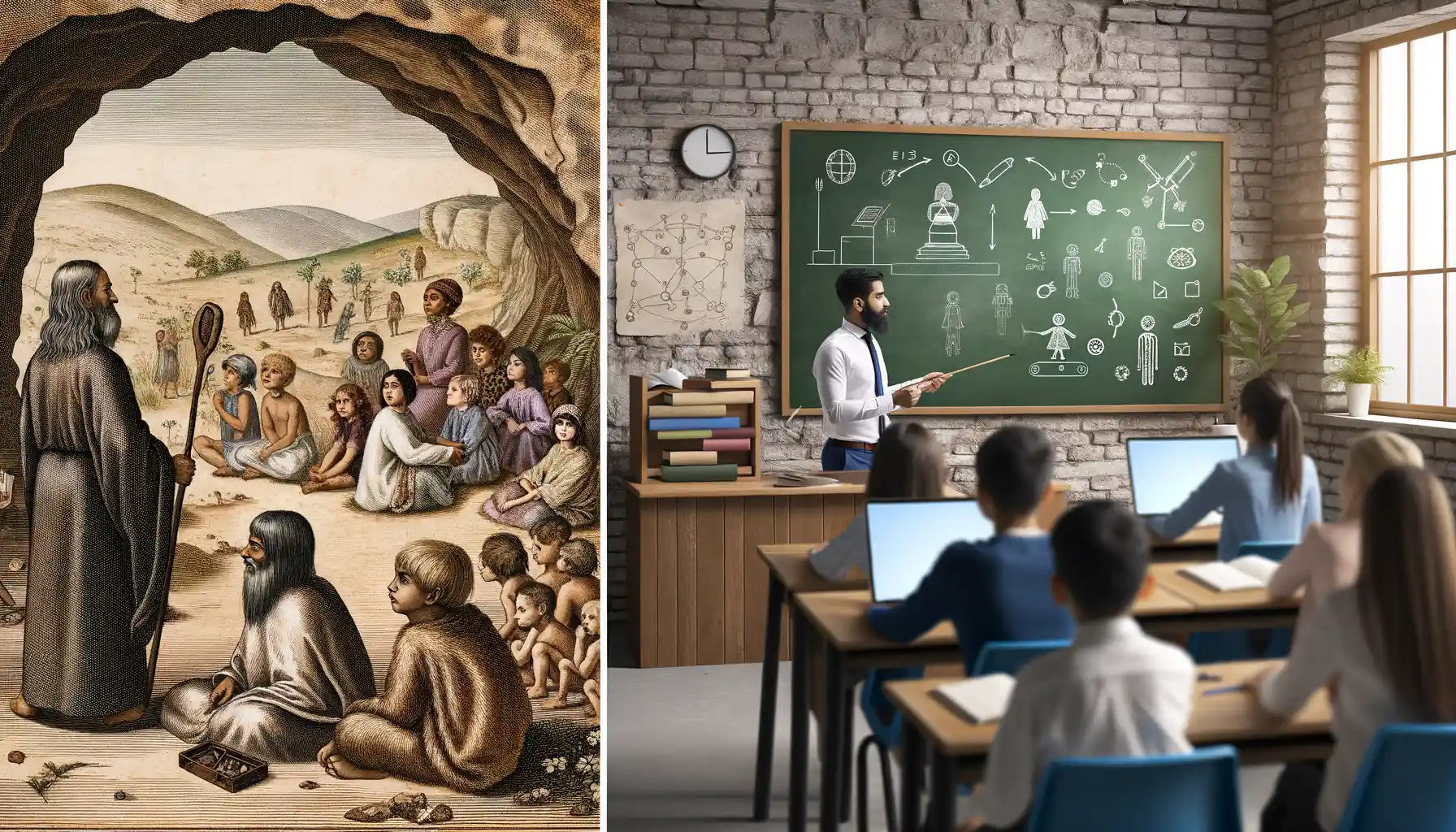Introduction to the Evolution of English Language Teaching
Think back to your first encounter with learning a language. Was it flipping through endless grammar drills? Memorizing a sea of vocabulary? Or maybe trying to form sentences that felt as rigid as a jigsaw puzzle missing its centerpieces? The way we approach teaching the English language has certainly come a long way from chalkboards and rote memorization.
The Shifting Tides of Language Teaching
Once upon a time, English lessons felt like they were pulled straight out of military training manuals: strict rules, repetition, and little room for creativity. But humanity thrives on innovation—and so did the field of teaching. Methods began to sprout like branches on a tree, each one evolving in exciting ways. From the Grammar-Translation Method, which turned students into walking dictionaries, to the emergence of communicative approaches that sent textbooks flying and real-world speaking skills soaring—each played its part in changing the game.
Here’s a quick glimpse of how the landscape of teaching tools evolved:
- Phonograph records introduced listening exercises.
- Language labs became the “cool kids” of classrooms during the mid-20th century.
- Today’s digital tools like Duolingo and Zoom classrooms make learning happen anywhere!
Beyond Rules: Teaching English as an Experience
The heart of modern English teaching lies in something much deeper than grammar charts or flashcards—it’s about connection. Picture this: a student using a favorite song lyric to spark a meaningful conversation or role-playing a coffee shop order in near-flawless English. These moments go far beyond definitions and syntax. They tap into the lightbulb moments, the “aha!” sparks that make teaching feel alive—for both learner and instructor alike.
This evolution isn’t just a story of methods; it’s the story of people adapting, dreaming, and thinking outside the box to ensure language reaches hearts, not just minds. And isn’t that the point?
Historical Overview of Teaching Methods

Tracing the Roots of Language Instruction
Step back in time for a moment—can you picture classrooms of the 1800s? Picture solemn rows of students, their hands clasped behind their desks, as a teacher drilled Latin-style grammar rules. This was the era of the Grammar-Translation Method, where learning English often felt more like solving equations than mastering a living, breathing language. Students translated Shakespearean texts word-for-word or memorized conjugations like secret codes unlocking linguistic mysteries. But was it practical for real-world use? Hardly.
Fast-forward to the early 20th century, when the world demanded something different. Enter the Direct Method, a breath of fresh air in language teaching. No translation, no detours—just immersion in spoken English. The focus was on dialogue, everyday phrases, and pronunciation, with teachers mimicking natural conversations to bring the language alive.
- The visionary ideas of the Audiolingual Method in the 1940s brought drills and repetition into play, inspired by wartime language needs.
- By the 1970s, humanistic methods like Suggestopedia promised students anxiety-free, music-filled classes.
Each method carried the fingerprints of its time, reflecting cultural shifts, technological advancements, and the ever-changing demands on learners.
Key Innovations in Modern English Teaching Approaches

From Dry Grammar Drills to Meaningful Communication
Imagine sitting in a classroom decades ago, slogging through endless grammar rules and textbook exercises. Fast forward to today, and the scene is almost unrecognizable. One of the key breakthroughs in modern English teaching is the shift from rote memorization to fostering real-world communication skills.
Methods like the Communicative Language Teaching (CLT) approach emphasize interaction over perfection. Picture learners role-playing as travelers asking for directions, or debating their favorite movie characters—real-life scenarios where confidence trumps flawless grammar. It’s not about how many grammatical boxes you tick; it’s about making your voice heard.
The Digital Revolution: A Game-Changer
Technology didn’t just knock on the door of language learning; it burst through, changing the game entirely. Tools like language apps, gamified quizzes, and virtual reality (VR) are turning dry lessons into immersive adventures. Imagine practicing English while exploring a 3D Paris café or chatting with an AI tutor at midnight!
Modern approaches are a symphony of creativity, technology, and human connection—and they’re rewriting how we learn to speak the world’s most global language.
Comparative Analysis of Traditional and Contemporary Methods

Examining the Old and Embracing the New
Imagine stepping into a classroom 70 years ago. The teacher stands at the front, armed with a blackboard, chalk, and a hefty grammar book. The focus? Memorizing rules and repeating drills. Now fast forward to today—a vibrant, interactive class where students work in groups, unleash creativity, and learn through apps and real-world immersion. Quite the leap, isn’t it?
Traditional methods like the Grammar-Translation Approach had their charm. They emphasized precision and offered a structured way to understand English. But let’s face it—how often can you apply sentences like “The cat is under the table” in casual conversations?
Now contrast that with modern teaching techniques:
- Task-Based Learning: Students collaborate to solve problems or complete real-life tasks.
- Blended Learning: Virtual tools meet in-class discussions, creating a dynamic mix of learning styles.
Where traditional methods often felt rigid and top-down, contemporary approaches are a breath of fresh air—full of flexibility, personalization, and even fun. A speaking activity today might involve designing a dream trip to Bali, using new vocabulary on-the-spot.
With each approach offering unique strengths, the debate continues: structure vs. spontaneity, theory vs. practice.
Future Trends in English Language Teaching

The Role of Technology in Shaping the Classroom
The English language classroom of the future is starting to look less like a traditional chalk-and-talk setup and more like an interactive tech haven. Imagine this: students wearing VR headsets, stepping into the cobblestone streets of 19th-century London to improve their understanding of historical context while practicing their pronunciation. Sounds futuristic? It’s happening now!
Technology like AI-driven language apps and virtual reality tools are poised to play a leading role in reshaping how we teach and learn English. Picture chatbots that mirror real-life conversations with native speakers or apps that translate emotions in speech into valuable feedback for learners. And these aren’t just gimmicks—they’re making learning feel personal, engaging, and even a little magical.
- Gamified platforms ensuring students stay hooked while learning complex grammar rules.
- Real-time translation software giving instant feedback to non-native speakers during live conversations.
Personalized Learning Journeys Ahead
Forget one-size-fits-all! The future of English language teaching is about tailoring the experience to each learner’s needs, strengths, and struggles. With the help of adaptive algorithms, educators can now track individual progress and adjust the curriculum on the fly.
For instance, a student mastering verbs faster than expected might soon receive poetry-writing tasks, stretching their creativity. Meanwhile, another grappling with basic tenses could access extra micro-lessons custom-designed to help them catch up. This feels less like teaching from a textbook and more like offering a bespoke service—and who doesn’t love something specially made for them?
What’s exciting is this shift towards making classrooms more like personal growth hubs. It’s not just about what students learn but how deeply they connect with the journey of mastering English—and that could be the ultimate game-changer.





